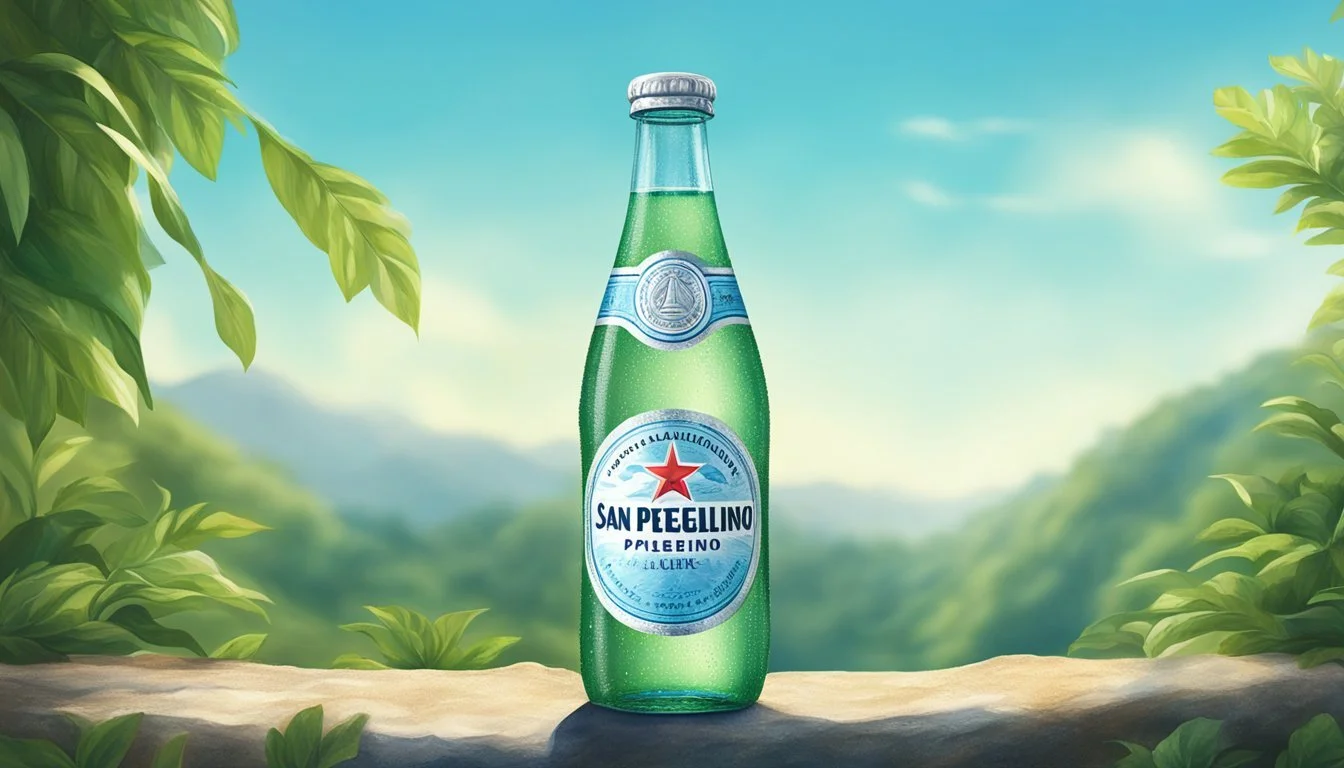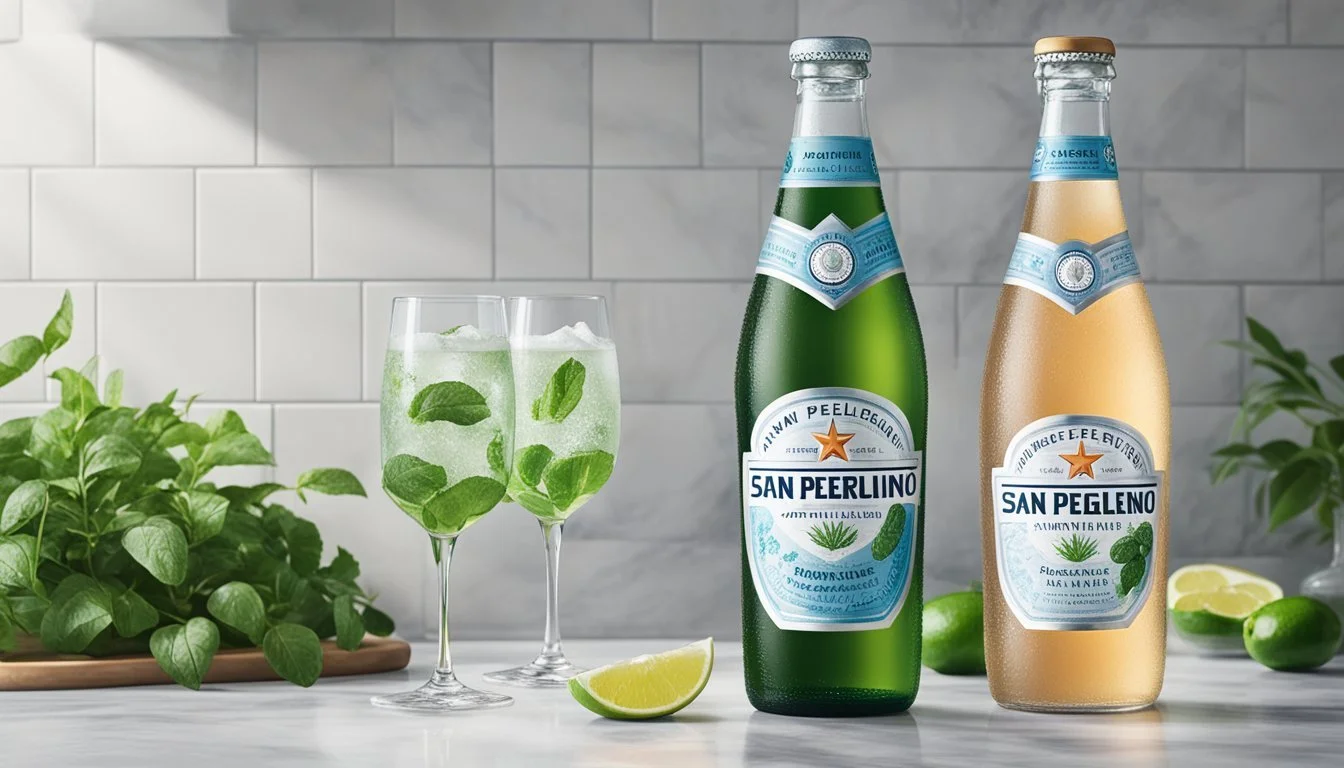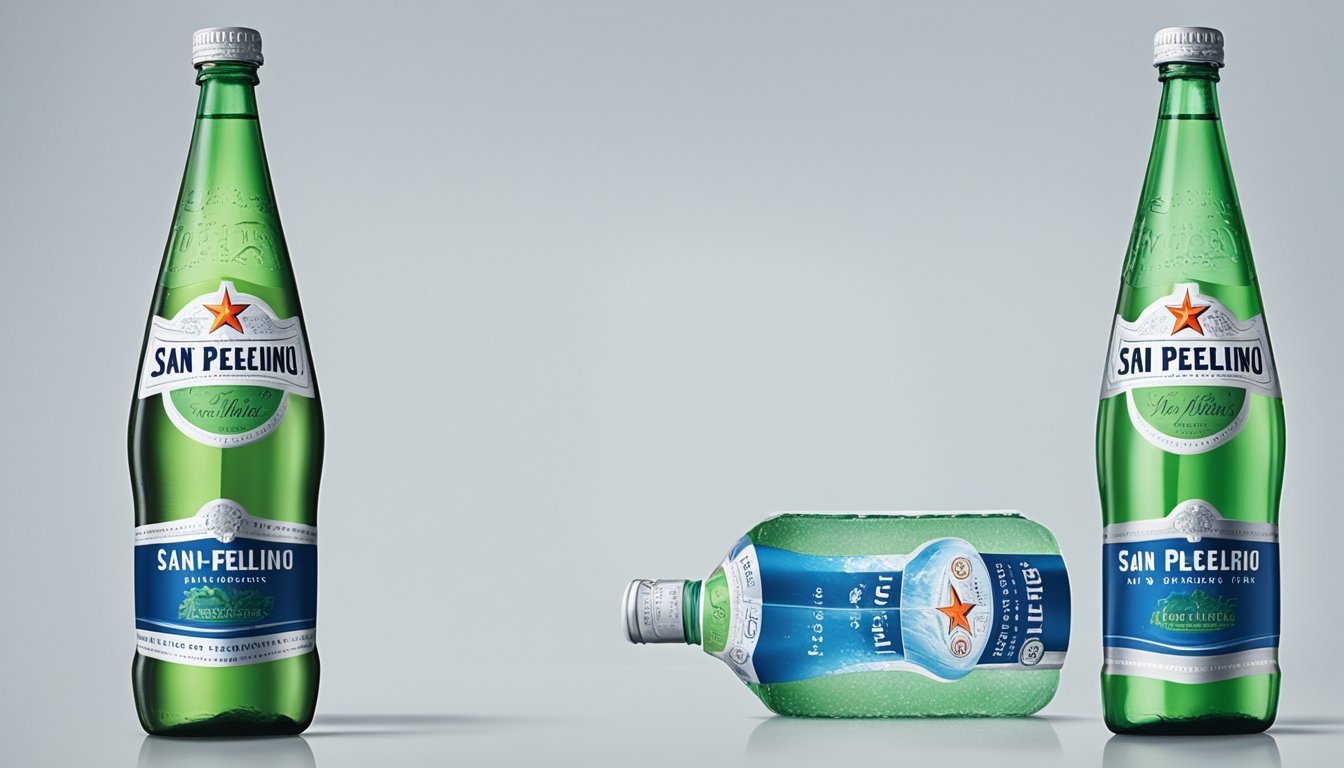San Pellegrino vs. The Well
Bottled Water Showdown
When it comes to choosing bottled water, discerning between popular brands like San Pellegrino and The Well can make a significant difference. San Pellegrino, sourced from the Italian Alps, is renowned for its rich mineral content, including potassium, calcium, sodium, and magnesium. This sparkling water's effervescent character is introduced by adding carbon dioxide, ensuring a refreshing experience with every sip.
On the other hand, The Well offers a unique proposition. With its crisp, clean taste, it caters to those who prefer a pure and unaltered flavor in their bottled water. Consumers looking for a straightforward hydration option may find The Well to be their ideal choice.
The decision between San Pellegrino and The Well ultimately hinges on personal preference. For those who appreciate a mineral-rich and sparkling experience, San Pellegrino stands out. Conversely, The Well's appeal lies in its simplicity and purity, making it a strong contender for those who favor a more neutral taste.
Understanding Bottled Water
Bottled water comes in various types, each with unique qualities and mineral compositions. The different types include mineral water, sparkling water, carbonated water, spring water, alkaline water, and still water.
Mineral Water
Mineral water contains essential minerals like calcium, magnesium, and sodium. These minerals occur naturally and can contribute to the body’s daily mineral intake.
Sparkling Water
This is water that contains dissolved carbon dioxide gas, creating bubbles. Sparkling water can be natural or artificially carbonated and adds a refreshing fizz to the drinking experience.
Carbonated Water
Similar to sparkling water, carbonated water also contains added carbon dioxide. It can be natural but is often infused, providing an effervescent texture.
Spring Water
Spring water is sourced from natural springs. It is typically rich in minerals and is filtered through natural processes as it flows underground.
Alkaline Water
Alkaline water has a higher pH level, usually above 7. It is believed to help neutralize acidity in the body. Some find it has a smoother taste than regular water.
Still Water
Still water is plain, non-carbonated water. It can come from various sources, including springs, wells, or tap water, and is often purified before bottling.
Below is a comparison of the bottled water types by some of their characteristics.
Type Carbonation pH Level Mineral Content Mineral Water No/Yes (varies) Neutral/Alkaline High (natural minerals) Sparkling Water Yes Varies Varies Carbonated Water Yes Slightly Acidic Varies Spring Water No Neutral Moderate (natural minerals) Alkaline Water No Alkaline (>7) Varies Still Water No Neutral Low/Nil
By understanding these differences, consumers can make informed decisions based on their preferences and health needs. Each type offers something unique, catering to a wide range of tastes and dietary requirements.
Historical Context
San Pellegrino and The Well have distinct histories that reflect their unique qualities and origins. Understanding these backgrounds can enhance the appreciation of each brand.
The Legacy of San Pellegrino
San Pellegrino originated in the town of San Pellegrino Terme, nestled in the Italian Alps. The region has been renowned for its mineral springs since the 13th century. By 1906, San Pellegrino was officially bottled, offering a naturally mineral-rich water.
The brand’s founders discovered that adding carbonation helped preserve the water's minerals. This practice began in the early 20th century and became integral to San Pellegrino’s identity. The water’s effervescence and taste made it a favorite in Italy and beyond.
Today, San Pellegrino is synonymous with fine dining and high-quality beverages. Its heritage connects deeply to Italian culture and culinary traditions.
The Emergence of The Well
The Well, a more recent entrant in the bottled water market, emphasizes purity and sustainability. Established in the early 21st century, it sources water from pristine underground aquifers. Unlike San Pellegrino, The Well focuses on offering still water with a clean, crisp taste.
The company’s mission includes environmental stewardship, using recyclable packaging and supporting water conservation efforts. The Well quickly gained a reputation for quality and transparency, attracting health-conscious consumers.
Although newer, The Well's commitment to purity and ethical practices positions it as a strong competitor in the bottled water industry.
Health and Consumption
When comparing San Pellegrino and The Well water, it is essential to consider their mineral content and any health implications, including concerns over sodium and sugar intake.
Mineral Content and Health Benefits
San Pellegrino is rich in natural minerals, including calcium, magnesium, potassium, and bicarbonate. These elements support bone health, muscle function, and metabolic processes. Calcium helps in strengthening bones and teeth, while magnesium is crucial for muscle function and nerve signaling.
The Well water also contains minerals but in different proportions, potentially affecting its taste and health benefits. Potassium can aid in regulating blood pressure, while bicarbonate helps neutralize stomach acid, aiding digestion. Comparing the mineral profiles can help individuals choose based on their dietary needs.
Concerns Over Sodium and Sugar
San Pellegrino contains a noticeable amount of sodium, which can be a concern for individuals with high blood pressure or those on a low-sodium diet. Monitoring sodium intake is crucial for heart health and maintaining proper blood pressure levels.
On the other hand, The Well water typically has low sodium content, making it a better option for those sensitive to salt intake. Both waters are generally free from sugar, which is beneficial for dental health and avoiding unnecessary calories. Choosing the right water depends on individual health priorities and dietary restrictions.
Physical Properties
San Pellegrino and The Well exhibit distinct physical properties that affect their taste, feel, and impact on the consumer. Key differences lie in their carbonation levels, pH, and acidity, which ultimately influence hydration and sensory experiences.
Carbonation and Fizz: A Comparison
San Pellegrino is renowned for its refined bubbles and moderate carbonation. This sparkling mineral water's carbonation results in a sophisticated and subtle fizz.
In contrast, The Well offers a different experience. Depending on the variety, The Well may provide lighter or more robust carbonation.
Comparison Table:
Property San Pellegrino The Well Bubble Size Fine Varies Carbonation Moderate Light to Robust
These distinctions in carbonation and bubble size shape the drinking experience, catering to different preferences for fizz intensity.
Understanding pH and Acidity Levels
pH and acidity levels significantly impact the taste and potential effects on teeth. San Pellegrino has a slightly acidic pH of around 5.6, comparatively gentle on tooth enamel.
The Well's pH can vary but frequently tends towards neutral or mildly alkaline, reducing potential concerns about acidity affecting dental health.
Here’s a brief highlight:
San Pellegrino: pH ~ 5.6 (slightly acidic)
The Well: Often closer to neutral or mildly alkaline
These variations influence hydration efficiency and the overall refreshing quality of each water type.
Taste Profiles
San Pellegrino and The Well offer unique taste experiences that appeal to different preferences. This section explores the natural flavors and experiences of both brands and outlines how to effectively conduct a taste test.
Natural Flavors and Essences
San Pellegrino is well-known for its range of flavored sparkling waters. The brand offers a variety of options, including lemon, lime, orange, and blood orange. These flavors are created using natural essences and minerals sourced from the Italian Alps, which contribute to a crisp and refreshing taste.
In contrast, The Well prioritizes a pure, neutral taste. The focus is on maintaining the natural quality of the water, free from additives or artificial flavors. This approach appeals to those who prefer a more subtle and unaltered drinking experience.
Each company takes a unique approach to flavor. San Pellegrino uses its mineral water as a base to create beverages with rich, complex tastes. The Well, on the other hand, aims for purity, letting the natural characteristics of the water shine through.
Conducting a Taste Test
To compare San Pellegrino and The Well, conducting a taste test is essential. Begin by chilling both waters to the same temperature. This ensures that temperature variations do not influence perception of taste.
Pour equal amounts of each water into identical glasses. Take a sip from each glass, paying attention to the initial taste, mid-palate flavors, and any aftertaste. Note characteristics like crispness, fizziness, and any mineral or flavor notes.
Set up a blind tasting to eliminate bias. Have a friend label the glasses and record observations without knowing which is which. Compare notes to see if preferences align with expectations or reveal new preferences.
Conducting a thorough taste test allows for an objective comparison between the vibrant flavors of San Pellegrino and the clean, pure taste of The Well.
Brand Perception and Marketing
San Pellegrino and The Well have distinct approaches to branding and positioning within the competitive beverage industry. These strategies play a critical role in shaping consumer perceptions and driving market share.
Beverage Industry Competition
San Pellegrino and The Well operate in a highly competitive market. San Pellegrino, originating from Italy, is renowned for its sparkling water. Its marketing emphasizes authenticity and a luxurious lifestyle. This brand is often associated with fine dining and is a favorite among sommeliers in the food and wine sector.
The Well, on the other hand, positions itself as a premium health-focused brand. Their marketing highlights purity and wellness, targeting health-conscious consumers. While it lacks the historical prestige of San Pellegrino, The Well leverages a modern aesthetic and emerging trends in health and sustainability.
Market Share and Branding
San Pellegrino maintains a significant market share within the sparkling water segment. Its branding is synonymous with sophistication and Italian heritage. This strong brand perception is reinforced through consistent high-profile endorsements and partnerships with luxury restaurants.
The Well has a smaller but growing market presence. Its branding focuses on clean, minimalist design and eco-friendly packaging. By aligning its image with sustainability and wellness, The Well attracts a different demographic than traditional brands. Both brands leverage their unique strengths to capture distinct segments of the market.
Product Variants and Pricing
San Pellegrino and The Well offer a variety of bottled water options to cater to different tastes and preferences. Pricing for these products often varies based on the type and packaging.
Comparison of Product Lines
San Pellegrino excels in its range of sparkling mineral waters. Available in classic sparkling water, flavored variants like lemon and orange, and even special editions, San Pellegrino caters to a broad audience.
The Well offers both still and sparkling waters, each distinguished by purity and quality. It also provides options like alkaline water, making it a diverse choice for health-conscious consumers.
Topo Chico and Perrier primarily offer sparkling options, often in unique flavors. Brands like La Croix, Bubly, and Polar focus on flavored sparkling waters. Essentia and Poland Spring typically specialize in premium still waters, with Essentia known for its high pH level.
Analyzing the Price Points
Pricing varies based on brand reputation, water source, and packaging. San Pellegrino tends to be more premium-priced, especially for its sparkling water variants, often falling between $1.50 to $2.50 per bottle. This is due to its rich mineral content and export costs from Italy.
The Well’s products are moderately priced, with prices ranging from $1.00 to $2.00 per bottle. Special types like alkaline water may be priced higher, reflecting their added health benefits.
Perrier and Topo Chico similarly hold premium price points, especially for their flavored sparkling waters.
La Croix, Bubly, and Polar offer more budget-friendly options, generally priced around $0.50 to $1.00 per can. Essentia and other premium still water brands like Poland Spring can range from $1.00 to $3.00 per bottle, depending on size and packaging.
Brands like Recess and Spindrift, known for their unique blends and health-centric profiles, often command higher prices, potentially $2.00 to $3.00 per can.
More About San Pellegrino
Acqua Panna vs San Pellegrino: Which Bottled Water is Better?
Boxed Water vs San Pellegrino: Which Bottled Water is Better?
Core Hydration vs San Pellegrino: Which Bottled Water is Better?
Ice Mountain vs San Pellegrino: Which Bottled Water is Better?
Icelandic Glacial vs San Pellegrino: Which Bottled Water is Better?
Just Water vs San Pellegrino: Which Bottled Water is Better?
Mountain Valley Spring Water vs San Pellegrino: Which Bottled Water is Better?
Nestle Pure Life vs San Pellegrino: Which Bottled Water is Better?
Poland Spring vs San Pellegrino: Which Bottled Water is Better?
San Pellegrino vs Alkaline88: Which Bottled Water is Better?
San Pellegrino vs Aqua Carpatica: Which Bottled Water is Better?
San Pellegrino vs Cascade Mountain: Which Bottled Water is Better?
San Pellegrino vs Castle Rock: Which Bottled Water is Better?
San Pellegrino vs CBD Living: Which Bottled Water is Better?
San Pellegrino vs Crystal Geyser: Which Bottled Water is Better?
San Pellegrino vs Crystal Lake: Which Bottled Water is Better?
San Pellegrino vs Essence pH10: Which Bottled Water is Better?
San Pellegrino vs Hawaii Volcanic: Which Bottled Water is Better?
San Pellegrino vs Hawaiian Springs: Which Bottled Water is Better?
San Pellegrino vs Kirkland Signature: Which Bottled Water is Better?
San Pellegrino vs Liquid Death: Which Bottled Water is Better?
San Pellegrino vs Open Water: Which Bottled Water is Better?
San Pellegrino vs Proud Source: Which Bottled Water is Better?
San Pellegrino vs Purely Sedona: Which Bottled Water is Better?
San Pellegrino vs Richard's Rainwater: Which Bottled Water is Better?
San Pellegrino vs Simple Truth: Which Bottled Water is Better?
San Pellegrino vs Smartwater: Which Bottled Water is Better?
San Pellegrino vs Solan de Cabras: Which Bottled Water is Better?
San Pellegrino vs Talking Rain AQA: Which Bottled Water is Better?
San Pellegrino vs Topo Chico: Which Bottled Water is Better?
San Pellegrino vs Weird Water: Which Bottled Water is Better?
San Pellegrino vs Whole Foods 365: Which Bottled Water is Better?
San Pellegrino vs Whole Foods Italian Still Mineral water: Which Bottled Water is Better?
San Pellegrino vs Zephyrhills: Which Bottled Water is Better?
More About The Well
Cascade Mountain vs The Well: Which Bottled Water is Better?
Hawaiian Springs vs The Well: Which Bottled Water is Better?
Icelandic Glacial vs The Well: Which Bottled Water is Better?
Mountain Valley Spring Water vs The Well: Which Bottled Water is Better?
Nestle Pure Life vs The Well: Which Bottled Water is Better?
Richard's Rainwater vs The Well: Which Bottled Water is Better?
The Well vs Kirkland Signature: Which Bottled Water is Better?
The Well vs Talking Rain AQA: Which Bottled Water is Better?
Whole Foods Italian Still Mineral water vs The Well: Which Bottled Water is Better?







